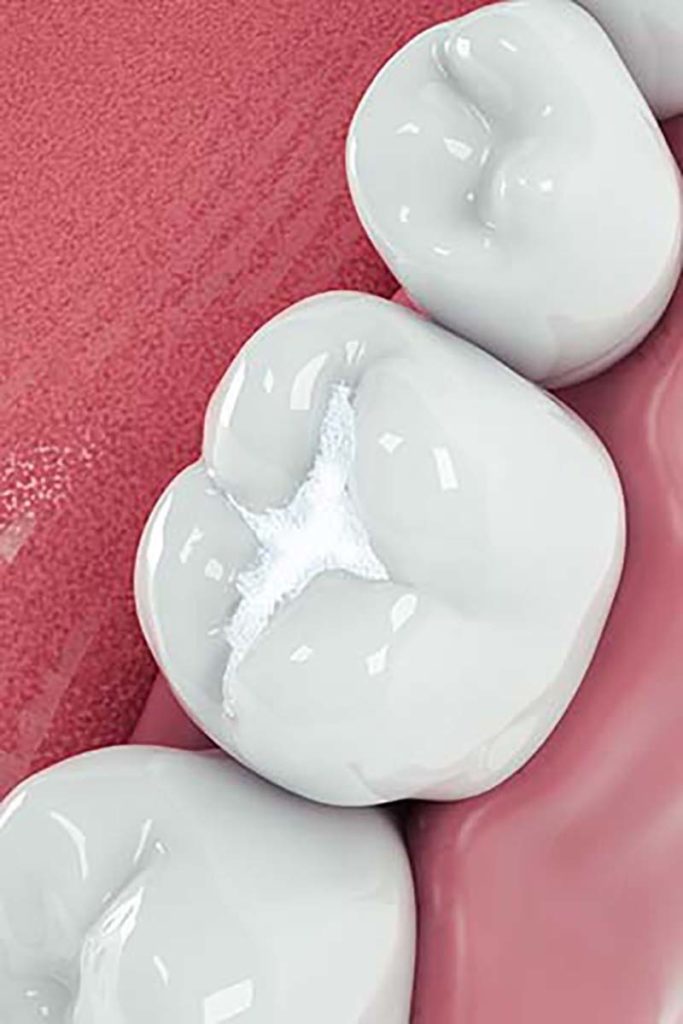Fillings and Sealants
Tooth decay and cavities are common dental problems. Getting a tooth-colored filling can prevent the issue from worsening.
Tooth Fillings and Sealants in Fair Oaks, CA
Understanding Tooth Fillings
When you visit us with concerns about tooth decay or minor damage, a tooth filling may be the recommended solution. A tooth filling is a straightforward treatment that restores your tooth’s health and prevents further decay. Our composite fillings match the color of your natural teeth, ensuring a seamless look. We prioritize making the filling process comfortable and effective, helping you maintain a beautiful, healthy smile.
The Benefits of Dental Sealants
Dental sealants are a preventive treatment that protects hard-to-clean areas of your teeth from decay, especially the deep grooves of your back teeth. This quick and painless procedure is ideal for children and adults, creating a smoother surface that’s easier to clean and less prone to cavities.
We understand that dental visits can be anxiety-inducing, which is why we focus on a comfortable and reassuring experience. Our clinic uses the latest techniques to ensure high-quality care and patient satisfaction. Whether you need routine filling or preventive sealants, our team is here to guide you with compassion and expertise.
Ready to Protect Your Smile?
Contact us today to schedule your appointment and learn how our fillings and sealants can contribute to a healthier, more confident smile.

-
How long does it take to fill a cavity?
-
What does a cavity look like?
A cavity, also known as dental caries or tooth decay, typically appears as a small hole or dark spot on the surface of a tooth. Here are some common visual characteristics of a cavity:
- Dark Spots or Holes: Initially, cavities might look like a brown or black spot on the tooth. As the decay progresses, it can develop into a visible hole.
- White Spots: Before a cavity forms, you might see white spots on the enamel, indicating the loss of minerals and the beginning of decay.
- Pits or Craters: In more advanced stages, the decay can cause pits or craters on the tooth’s surface, especially on the biting surfaces of the back teeth.
- Discoloration: The affected area might change color, ranging from light brown to black as the decay becomes more severe.
- Chipped or Broken Teeth: Sometimes, as the tooth structure weakens due to decay, parts of the tooth might chip off, particularly around the edges.
If you suspect you have a cavity, please call our office for a professional evaluation and appropriate treatment to prevent further damage.
-
What is the process of filling a cavity?
Cavity fillings are essential when tooth decay creates holes, or cavities, in teeth. Without intervention, decay will worsen, further damaging the tooth.
During a filling procedure, the dentist removes the decayed material from the cavity, typically using a drill, to halt further deterioration. However, simply removing decay does not repair the existing damage. That’s where a filling comes in. It fills the void left by decay, restoring the missing or damaged portion of the tooth.
The filling is shaped and molded to match the tooth, restoring its strength and integrity, and preventing future decay.
-
What are tooth fillings made of?
Various materials are used for dental fillings, including gold, porcelain, and silver amalgam—a blend of mercury, silver, tin, zinc, and copper. Tooth-colored options like plastic and composite resin fillings are also popular. Additionally, glass ionomer, which includes glass particles, is another material used similarly to composite resin. The choice of material depends on factors such as the dentist’s preference, the severity and location of the decay, and sometimes, insurance coverage.
-
Why is my tooth sensitive after a filling?
Tooth sensitivity after receiving a filling is a common occurrence and usually temporary. Here are some reasons why you might experience sensitivity:
- Inflammation: Removing decay and preparing the tooth for a filling can irritate the nerve inside the tooth, leading to inflammation and sensitivity.
- Type of Filling Material: Materials like composite resin can cause sensitivity due to their contraction and expansion with temperature changes in your mouth. This can create a slight gap between the tooth and the filling material, allowing sensations to reach the nerve.
- Depth of Filling: Deeper fillings closer to the nerve can be more sensitive because they affect more of the tooth’s structure.
- Technique and Bonding: The method used to bond the filling to the tooth can affect sensitivity. If the bond isn’t strong or there are gaps, temperature changes or pressure can stimulate the nerve.
- Pre-existing Conditions: If the tooth had extensive decay or a crack, it might already be weakened, making it more susceptible to sensitivity after a filling.
Typically, sensitivity after a filling should decrease within a few weeks. If it persists or becomes severe, it’s a good idea to consult your dentist to ensure the filling is set correctly and there are no other underlying issues.
-
How long does a dental sealant last?
Dental sealants have been a reliable and effective tool in preventing tooth decay since their introduction in the 1970s. Typically applied to the chewing surfaces of teeth, sealants provide a protective barrier against decay.
While the lifespan of sealants can vary, they often last for several years and can be reapplied if they wear off. It’s important to remember that sealants protect only the surfaces they cover. Therefore, fluoride and good oral hygiene help protect the tooth from decay and cavities.
-
Can adults get dental sealants?
Sealants are designed for healthy teeth that have yet to develop cavities. In most cases, they’re placed on permanent molars shortly after they come in (around 6 and 12, respectively). However, adults can choose to get sealants too. It may be that their childhood sealants came off, or they’re starting to develop cavities in other teeth for the first time.
Investing in affordable dental sealants can help you prevent more extensive (and expensive) oral health treatments in the future.
More Questions?
For more information on tooth fillings and sealants or to schedule an appointment with Orcutt Family Dentistry, please contact our office. We're here to assist you with any questions you may have and look forward to helping you achieve a healthier smile.
